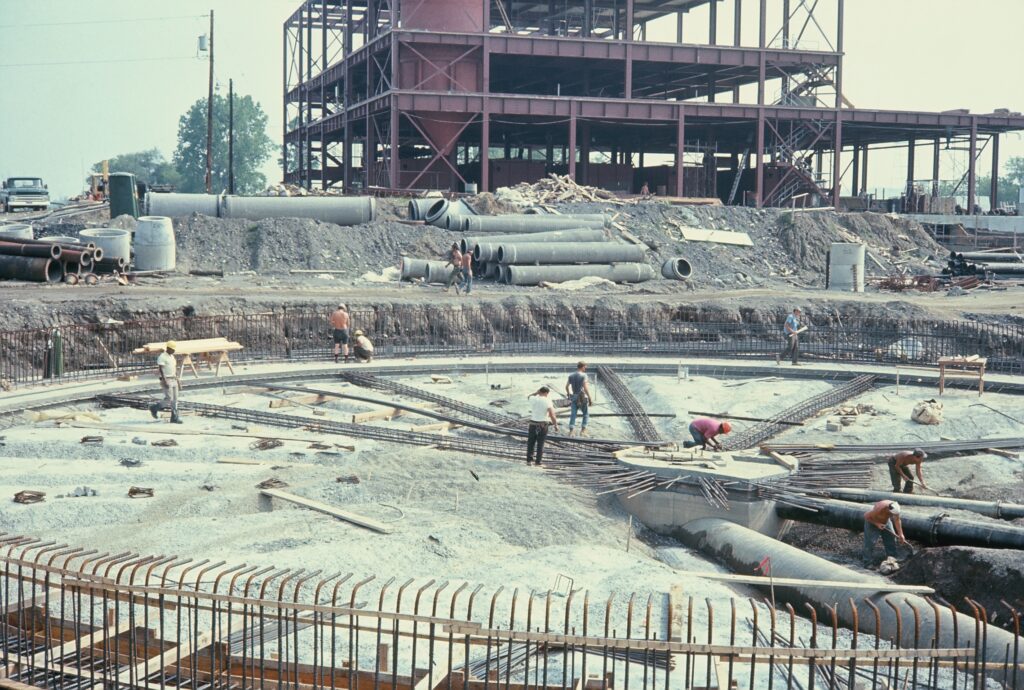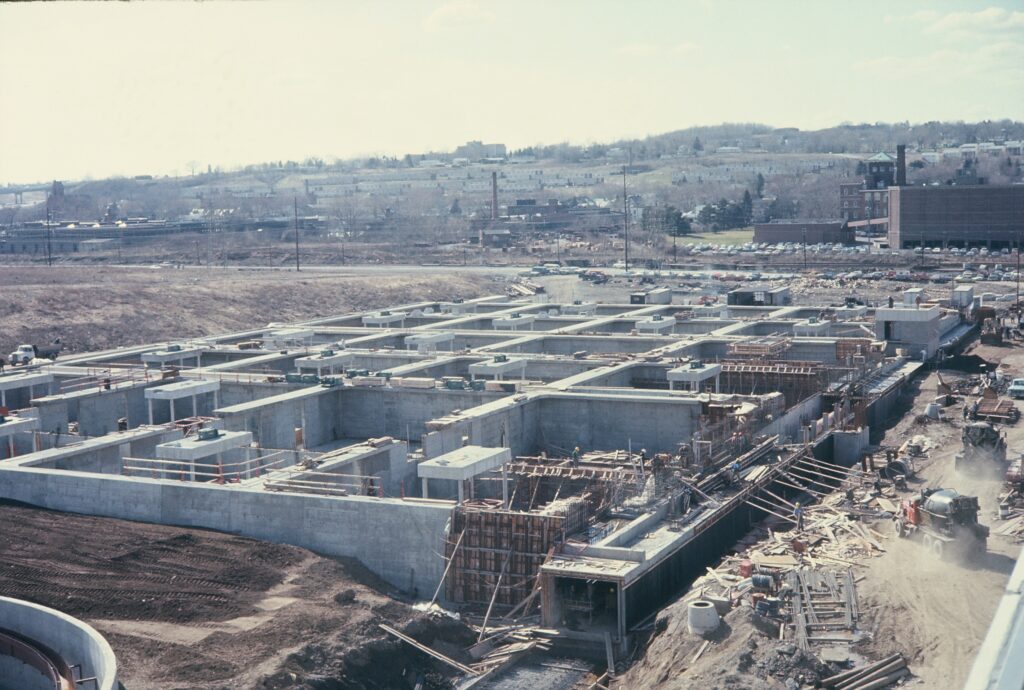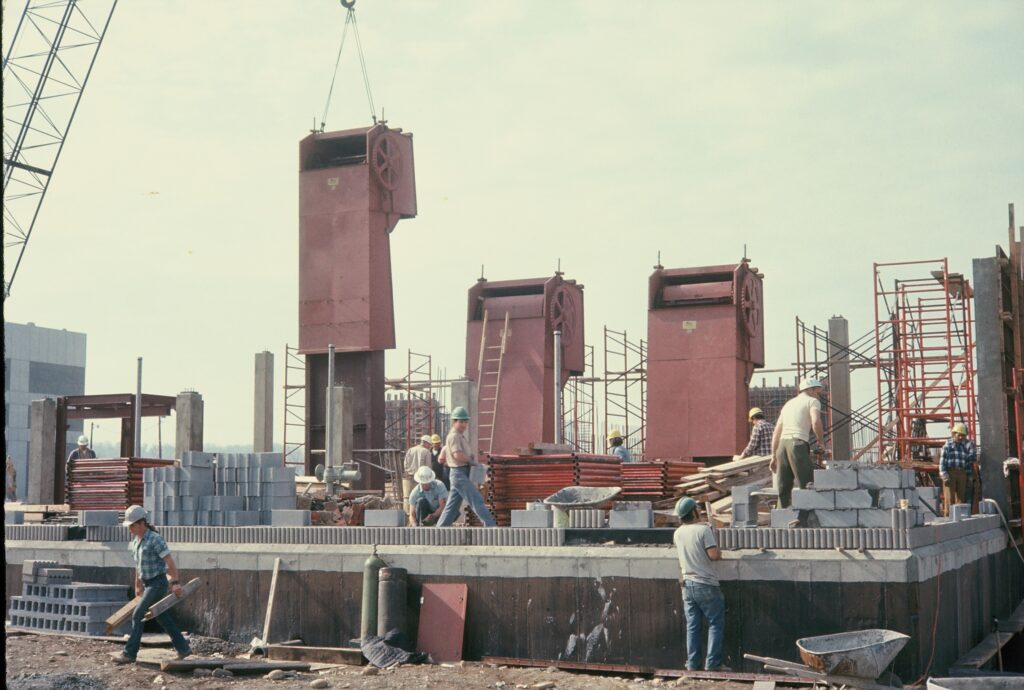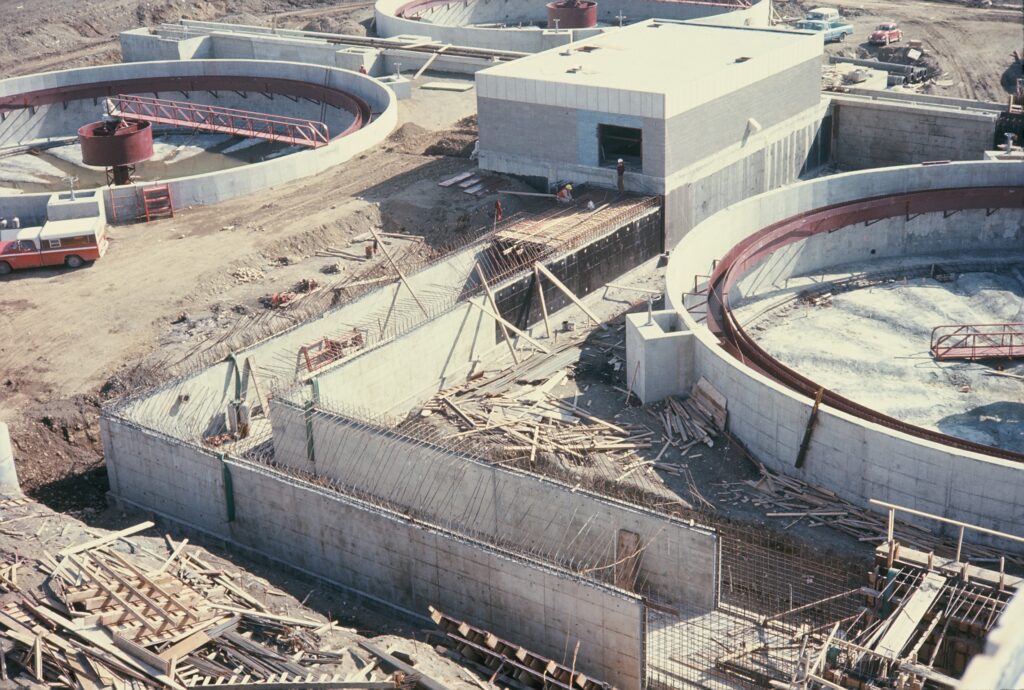A Historical Perspective
By Richard Lyons
The Albany, New York County Water Purification District, (formerly Sewer District), was formed by the Albany County Legislature through resolution 45 of 1968, which defined all participating communities, boundaries and governance structure.
The District serves the cities of Albany, Cohoes and Watervliet, the villages of Green Island, Menands and Colonie, and parts of the towns of Guilderland and Colonie. This covers a total population of approximately 200,000 residents, with 11 significant industrial users.
A county sewerage study, completed in 1966, provided the blueprint for the creation of a regional district and was funded by the Rockefeller Pure Waters Bond Act of 1965.

The county constructed two treatment plants designated North (35 million gallons per day) and South (29 million gallons per day permitted), and more than 20 miles of intercepting trunk sewers. The District purchased the South Plant site and existing intercepting sewers for $1 from Albany. The South Plant site was the location of Albany’s original primary treatment plant, which was constructed in 1913. Both treatment plants are conventional activated sludge with solids thickening, dewatering and the ultimate disposal method being multiple hearth incineration. The plants encompass approximately 35 acres each. Original construction costs were $71 million and were 87.5% grant funded (60% federal and 27.5% New York state). The federal money was from the 1972 Clean Water Act (CWA), which allocated $12 billion for treatment construction; and the 1965 New York State Pure Waters Bond Act, which provided a $1 billion investment.
I have a unique perspective of the District, as my father, Dr. John J. A. Lyons, was the deputy Albany County health commissioner from 1960-1967 and health commissioner from 1967-1982. He also served as chairman of the District Board of Commissioners from 1968-1985.
My father was heavily involved in advocating for the value of a regional district to vastly improve water quality in the Hudson River and protect public health. I remember seeing the plans for the District on the kitchen table, and how much time he spent going from community to community to garner support for a regional entity. This wasn’t an easy task, as he was dealing with not only physical boundaries, but also those of politics.

Ultimately, the communities all came on board except for one, and municipal contracts were executed from 1968-1971. These contracts provided full cost pricing and defined apportionment of costs to each community for operation/ maintenance and debt service. The apportionment for debt was not only for original construction, but also for future improvements. The District is a special one defined by New York state county law; and, as an enterprise fund, it is wholly funded by user fees and assessments.
All components of the District were designed, let for bid and constructed by early 1974. The total time from formation to completion was approximately 5.5 years.
After both plants commenced operating in April of 1974, the county needed to overcome the challenge of staffing the operation and maintenance departments. Albany historically had numerous breweries, including the Beverwyck Brewery (1878-1950), which later became Schaefer Brewery − “the one beer to have when you are having more than one” − in 1950. Unfortunately, Schaefer closed in 1972, which left numerous people unemployed. The District hired more than 40 of those laid-off employees, who became solids handling operators, shift supervisors, mechanics, chief operator, and chief of maintenance and instrumentation.

These men all had an unbelievable work character and ethics, with many being part of the “greatest generation,” shaped by the hardships of the Great Depression and the battles of World War II. The staff included numerous veterans who served in the European theater of operations and were involved in the invasion of German-occupied Europe in Operation Overlord (Battle of Normandy) on D-Day, and in the Battle of the Bulge. They provided instantaneous experience in operating pumping, conveyance and equipment. With their brewery knowledge, they quickly adapted that factory setting to wastewater treatment. Also, two community colleges, Hudson Valley and Morrisville had associate degree programs in environmental science with a focus on wastewater operations and treatment. Several graduates of these programs were hired, and with the mix of young operators, experienced blue-collar staff, management and engineers administratively, the District was staffed to be successful.
The District was well conceived, designed and operated and has been virtually 100% compliant with all permits since 1974. Also, the clean water infrastructure constructed was affordable due to the CWA and the NYS Pure Waters Bond Act. The CWA provided national standards for treatment, receiving stream classification which required secondary treatment.
Operating a secondary treatment process with the resulting production of biological sludge was an early challenge. The original solids dewatering equipment was rotary drum vacuum filters, which produced a very wet cake, causing inefficient solids handling costs. The vacuum filters were replaced in 1980 with belt filter presses which were a game changer for dewatering combined primary and secondary sludge.
The District has completed approximately $50 million in capital improvements in the past 25 years to insure continued compliance. Innovation has also been a key to success with the South Plant providing final effluent to a gas-fired turbine power plant on the east side of the river. This is one of the largest beneficial uses of secondary effluent in New York and provides annual revenue that can be invested in plant improvements.

The CWA, along with the 1965 NYS Pure Waters Bond act, has made a profound water quality improvement in the Albany pool area of the Hudson River (Troy dam to south of Albany). In the 1960s and early 1970s, the river in the Albany pool area was like an open sewer that was virtually devoid of dissolved oxygen to support aquatic life. Governor Nelson Rockefeller commented on the situation in 1965, saying “the river from Troy to the south of Albany is one great septic tank that has been rendered nearly useless for water supply, for swimming, or to support the rich life that abounded there.”
After the Albany pool area treatment plants went online, the New York State Department of Environmental Conservation (NYSDEC) reported collecting 3,314 fish representing 27 species in the summer of 1975. The Albany pool communities are now in the middle of a 15-year Combined Sewer Overflow Long Term Control Plan. This program takes the next step in improving water quality by reducing overflows resulting in a major reduction of bacteria during large wet weather events.
Richard (Rich) J. Lyons served the Albany County Water Purification District for more than 40 years and was executive director from 2005-2015. He has been a NEIWPCC commissioner since 2016.
This article was originally published in the Spring 2023 edition of Interstate Waters magazine.